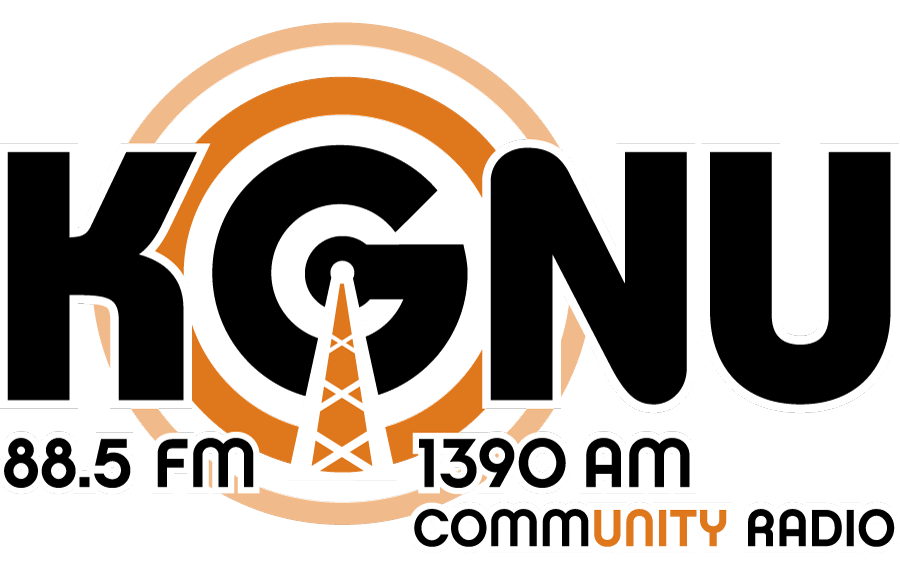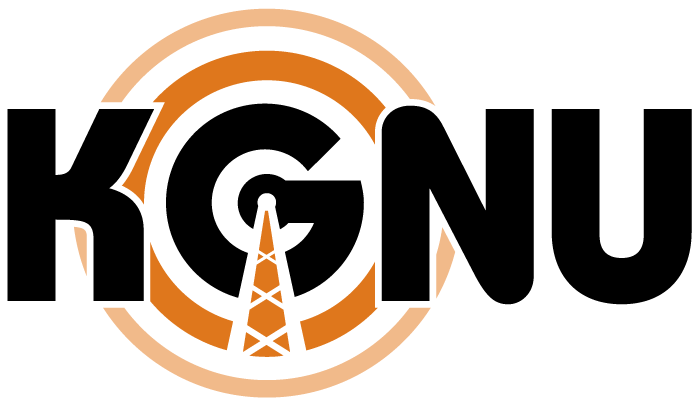The bulk of the water supply for the western US comes in the form of snow. That’s approximately 70% of the water we use originating in snow pack high up in the Rocky Mountains. Therefor measuring that snow and estimating how much water it will turn in to, is vital for water managers downstream and for researchers trying to track snow fall changes over time.
-
 play_arrow
play_arrow
Connecting the Drops: Measuring Snow kgnu
Image: A view from the SnowEx flight over Grand Mesa Colorado. The sensors being tested on the plane will end up on the future NASA snow satellite (NASA).
Much of the measurement happens on the ground, but increasingly, data is being gathered from the sky, and ultimately more data will come from satellites. For Connecting the Drops, our state wide series on water, Maeve Conran reports.

There are so many ways to measure snow. There’s the hands on approach that has been used for over a century, sticking a tube or measuring stick in the snow to see how deep it is. And then there’s the more high tech measuring systems, like the SNOWTEL sites dotted around the Colorado mountains. Jeff Deems, a research scientist with the National Snow and Ice Data Center, shows me the snow telemetry or SNOTEL site at Lake Irene near the headwaters of the Colorado River in the Rocky Mountain National Park.
SNOTELS are remote sensors that collect different information about the snow says Deems.
“A snotel site consists of a snow pillow which is this anti-freeze filled bladder that’s sitting on the ground in front of us, it’s covered in chain mail to keep critters from digging at it, and that weighs the snow pack that accumulates throughout the winter.”
It’s the weight of the snow that allows Deems to calculate how much water the snow actually contains. It also measures air temperature, precipitation and snow depth. Deems says it’s the combination of all the sensors that gives a picture of what snow pack is like at this site.
“(It) allows us to make relationships with stream flow further down in the basin and forecast river run off.”
That’s crucial information for researchers like Deems, but also for water managers downstream. The SNOTEL sites transmit the data to Natural Resources Conservation Service offices, like the one in Denver, where Brian Domonkos can track what’s happening with snowpack around the state. Domonkos is the snow survey supervisor with the NRCS in Colorado. It’s the main snow pack monitoring program within the state. From his computer in Denver, he can monitor the information coming in from the sites around the state.
“This is the Colorado snow water equivalent update map, it’s updated daily and it takes in all of the SNOWTEL data that is available to it and processes that data to get basin wide and state wide snow water equivalencies.”

The NRCS maintain the SNOTEL sites, of which there are 115 in Colorado and about 850 in the Western US. While they provide valuable information to researchers and water managers, there are still some challenges, especially in forested areas damaged by beetle kill, where some SNOTEL sites are located. Trees can fall and damage the equipment, and less canopy can lead to more wind, which in turn can impact the data being collected says Domonkos.
“We are trying to come up with tools to help better identify, has this site been catastrophically changed to where the period of record may not be consistent since the beetle kill epidemic.”
Despite some challenges, SNOTEL sites continue to provide vital information to researchers and water managers. But in recent years snow pack measuring has well and truly moved into the 21st century.
In 2016 NASA flew a SnowEx research plane out of Grand Mesa Colorado, as part of its 5 year airborne campaign which is working towards a future snow satellite mission. This type of high tech snow monitoring is getting researchers like Noah Molotch excited. He’s the Director of the Center for Water Earth Science & Technology at CU’s Institute for Arctic and Alpine Research. He and his colleagues have been brainstorming with NASA on a snow satellite, which he says will transform future research by giving a broader view of the snowpack than current monitoring allows.
“It’s going to totally be just a paradigm shift.”
Molotch says that the work NASA has already done in the past decade has shifted the science of snow to a new level of understanding — everything from what controls distribution of snow, to how it influences ecological processes like forest fires.
“The accumulation of snow is interlinked to so many processes that sort of our society is vulnerable to, so it’s going to change in a very big way the way that we approach our research and the tools that we have to ask questions we’ve been asking for decades, but to finally answer those questions, there’s been a real bottleneck there in terms of the science we can do because of the lack of information.”

A NASA Snow Satellite is about 15 to 20 years away from being a reality says Molotch. And while a snow satellite is an interesting prospect for snow forecasting and water management, Brian Domonkos at the Natural Resources Conservation Service in Denver says he’s taking a wait and see approach.
“Will one technology provide a more skillful forecast, which one is that? That’s very hard to determine and only time will be able to tell us that. More technologies are usually better and we’ll just have to see how it plays out.”
This year’s snowpack is well below average in Colorado, at about 60%. With forecasts of drier winters ahead, more accurate snow measurement will be crucial for managing water supply going forward.
Connecting the Drops is made possible through a grant from Water Education Colorado.
-
 play_arrow
play_arrow
Connecting the Drops: Measuring Snow kgnu
Podcast: Play in new window | Download


















